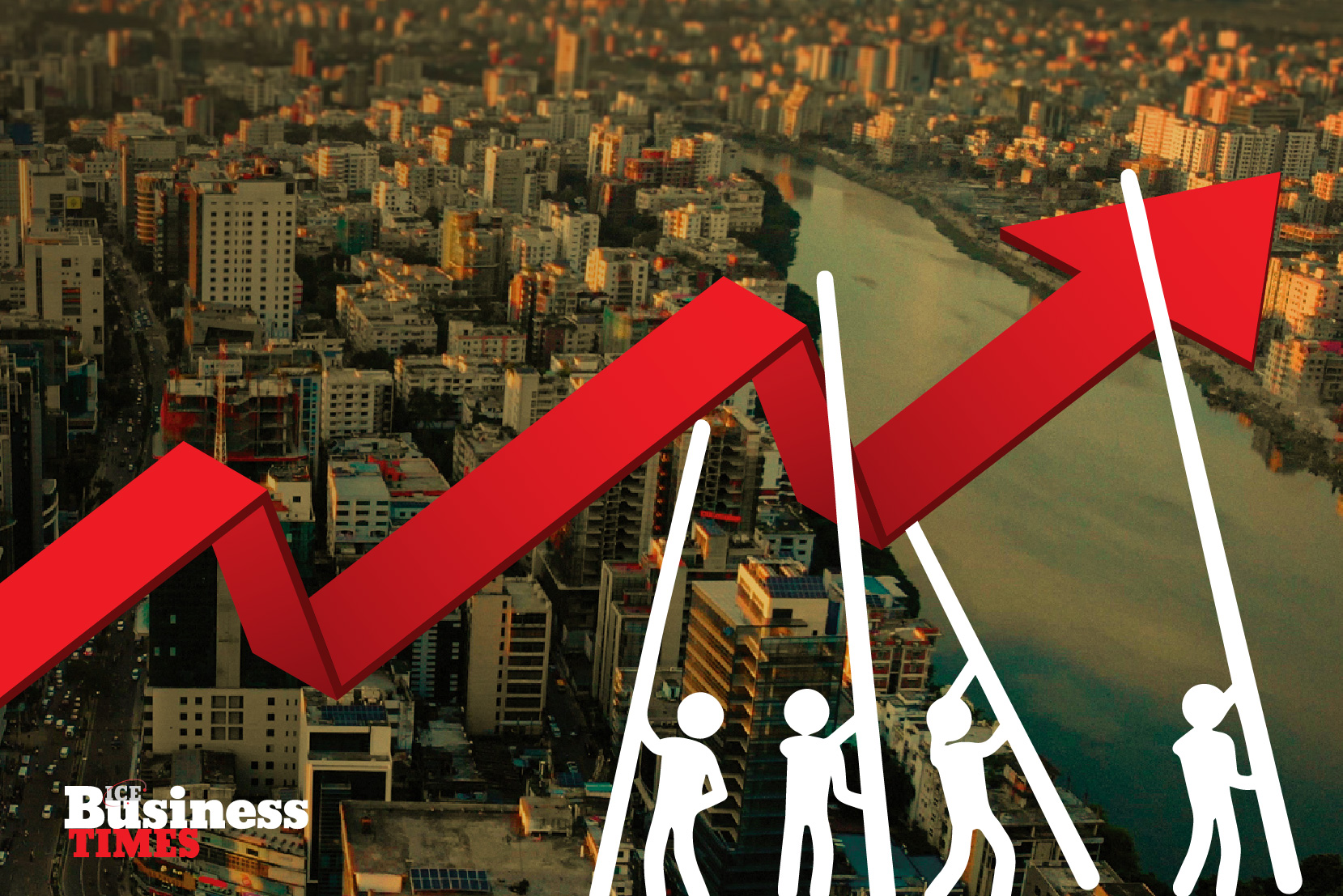Consumer behaviour is constantly evolving, especially with the advancement of digital technology. With computers coming in all sizes and the internet revolutionising the customer journey, the means by which companies are interacting with their buyers is changing significantly. As the internet morphs with integrated devices and new technology, consumer trends are going through a revolutionary face lift!

According to a report from Statista, of the almost 4.5+ billion people using the internet today, 3.96 billion are social media users. As such, it’s not surprising that a report by Forbes has found that 81% of consumers’ purchasing decisions are influenced by social media posts made by their friends. With the evolution of digital tech and the intertwined relationship with the rapidly developing internet, this is only one example of the many ways that technology is disrupting consumer behaviour and trends globally. Coupled with the onset of the global pandemic, there are now noticeable roles of technology that are influencing consumer behaviour.
SOCIAL SITUATION
Firstly, it’s worth mentioning that social commerce is on track to become a USD 1.5 trillion industry by 2025. Forbes researched that companies’ social media posts impact purchases of roughly 78% of consumers. Additionally, a Stackla report highlighted that 56% of consumers are presently more influenced by social media images and videos when doing online shopping as opposed to pre-pandemic times. Stackla further reports that 66% of consumers have been inspired to purchase from a new brand after seeing social media images from other consumers.
On the other hand, 84% of millennials say user-generated content from strangers has at least some influence on what they buy as revealed by Gartner data. Conversely, Bazaarvoice states that conversions increase 133% when mobile shoppers see positive reviews before buying. More specifically, Business Insider found that Facebook accounts for 50% of total social referrals and 64% of total social revenue. It was also revealed by Facebook Insights that Millennials are 1.6 times more likely to use digital channels to learn about new products.
ENTER THE INFLUENCER
Today, where social media is everywhere, consumers tend to gravitate toward experiences that are authentic. This is where influencers come in as potential customers are more likely to trust an individual over traditional push ads regarding the brand image of a product.
STREAMING TO SELLING ON LIVE
As instances of in-person shopping decreased due to health concerns over COVID-19, live streaming became more popular as a medium to shop, as it had the ability to create an emotional connection, similar to physical interaction, with people staying indoors. On top of that, live selling has now made it possible to further disrupt the retail industry that is still reeling from the effects of the pandemic. For example, in Bangladesh, startups like Shophopper have taken this experience to the next step as people can purchase from local and international shops using the platform from the comfort of their homes.
With increasing numbers of people on the move, quick accessibility features such as voice search and voice commands are increasing. Natural Language Processing (NLP) algorithms are helping the end-user and are also making contents voice-search-friendly.
VIDEO ESCALATION
The growth of smart TV, video streaming options and online video advertising are having a large impact on consumer behaviour. Coupled with the continued increase of digital audiences, this is expected to drive online video ad spending from USD 62 billion in 2021 to USD 91 billion in 2024, exceeding 50% of the spending on television advertisements.
INSTRUMENTAL AI
Artificial intelligence algorithms are enabling companies to forecast the myriad of purchasing decisions that can be made by consumers, by analysing buyers’ previous purchase patterns. As such, shoppers are now enjoying customised marketing experiences more than ever before.
LEVERAGING THE LENS
Google Lens, made by the tech-giant, Google, is an AI-driven visual search app and is another example of a new way to connect with customers. Google Lens allows the user to point a phone camera at any object to get search recommendations related to it. Google Lens can recognise dresses, restaurants, clubs, cafes, and more, presenting the customer with important suggestions and details.
CHATBOT CONVERSIONS
Chatbots are not novel in 2022 and they combine the use of text, voice and messaging to converse directly with consumers. Messaging apps such as Messenger and WhatsApp also make use of bots that are customised to push products and services to promote the brands, as well as provide the potential customer a tailored service experience that is quick and accurate.
VOICE VELOCITY
With increasing numbers of people on the move, quick accessibility features such as voice search and voice commands are increasing. Natural Language Processing (NLP) algorithms are helping the end-user and are also making contents voice-search-friendly. Smart speakers like Google Nest and Alexa give consumers the ability to shop without ever needing to look at a screen. Smart home devices not only take the weight off customers to recall past choices but can also predict their future ones.
AR ACCELERATION
Augmented Reality (AR) enables consumers to try products out in a simulated environment. For example, Instagram gives users the option to ‘try on’ products like lipstick or sunglasses. They can then purchase the product directly from the app without having to go to a third-party site. AR gives people an opportunity to virtually try out items the same way they would in a physical store. This allows shoppers greater choice in shorter time spans before making the final purchase.
A LINK IN THE BLOCKCHAIN
In recent years, blockchain technology expanded to digital marketing allowing marketing specialists to trace the trajectory of ads placement. The technology also guarantees that real consumers and not bots, are clicking on their ads. Customers can also reap the benefits of the transparency offered by blockchain technology, as it gives them more control over how personal data should be used by advertisers. Increasing consumer trust can also raise the odds of them consenting to sharing personal information.
VIRTUAL IS THE NEW MAINSTREAM
The pandemic has altered the modality of consumption. This includes how consumers encounter and eventually buy products and services. During the pandemic, a large number of enterprises tried out offering virtually immersive experiences. Although this tactic was utilised to generate engagement with remote customers, virtual experiences are getting adopted fast to become more mainstream and promises great demand for the near future.
CRACKS IN COMMERCE
The digital revolution has prompted a complex and fragmented commercial landscape as opposed to a continuous space where consumers find and meet their wants and needs. These changes posed challenges for industries like retail, FMCG and hospitality operators to deal with the pandemic and reach consumers.
SHARE AND CARE
Less than twenty years ago, individuals preferred more privacy. Technology has fundamentally changed this behaviour. Now, many people feel obligated to share almost anything online. Thanks to social media, consumers are prone to sharing data with producers. In essence, this gives producers information to target the right campaigns to attract the right customer.
Modern consumers like to seek recommendations. Even if a brand has an overall positive review, just one or two bad ones can prompt a potential consumer to hop to a different brand. The 2022 ORMS reveals that 3 out of 4 consumers trust a brand more if it has positive reviews.
COMPLEMENTING CONSUMER UTILITY
As opposed to going to numerous shops to compare a diversity of products, consumers now have more convenience as technology has changed this behaviour dramatically. Customers have the option to now evaluate features and price points of products from multiple retailers online without physically paying them a visit, or use AR in stores to check out further options before a purchase. Both examples have resulted in greater utility for customers.
CUSTOMER SATISFACTION
With easier access to the internet, buyers have become naturalised to participating in online window-shopping and purchases. This 24/7 access to stores means that consumers now expect assistance around the clock from businesses. Therefore,as customers get easier access to the internet, a vital area in which technology has impacted companies is the rising expectations of 24/7 access to customer service. Commercial entities must acclimatise to benefit from all available technologies and multiplatform engagements including remote customer service agents and AI chat bots.
INFORMATION IS KEY
Due to technological progress, individual customers are now able to compare all business information from different retailers online without physical visitation. The 2022 Online Reputation Management Statistics (ORMS) reports that 97% of consumers search online for local businesses while 12% of consumers do so on a daily basis.
BRAND REPUTATION BUZZ
Modern consumers like to seek recommendations. Even if a brand has an overall positive review, just one or two bad ones can prompt a potential consumer to hop to a different brand. The 2022 ORMS reveals that 3 out of 4 consumers trust a brand more if it has positive reviews. Consequently, to stay competitive, companies need to actively work to protect and improve their reputations by directly engaging with the consumer base online.
SAFEGUARDING SECURITY
Quite a few multinational companies around the world, including prominent names such as Marriott hotels, Kay Jewellers, Adidas, Panera Bread, Macy’s, Hy-Vee, Poshmark, Checkers and Rally’s, Buca di Beppo, Planet Hollywood, Earl of Sandwich, and Chicken Guy, have been victims of cyber attacks. Consequently, customers are becoming more aware that their everyday lives can be negatively disrupted by cyber attacks. Consequently, customer requirements now include better security of corporate databases that store their personal data. According to the Global Consumer State of Mind Report 2021, 56% of the surveyed 8,000 respondents expressed worries over losing track of their digital selves entirely, and are now seeking to regain control over their data.
These changes, and this improvement of digital technology impacts consumer behaviour and has an immense impact on business. With the pace at which technology is currently advancing, more changes can be expected in the near future. Being equipped with the knowledge of these trends and technologies will be the driving force for marketers to succeed.
The Writer is the CEO of MCFG and the Executive Director of Global Chamber Dhaka. He can be reached at maimun@globalchamber.org















